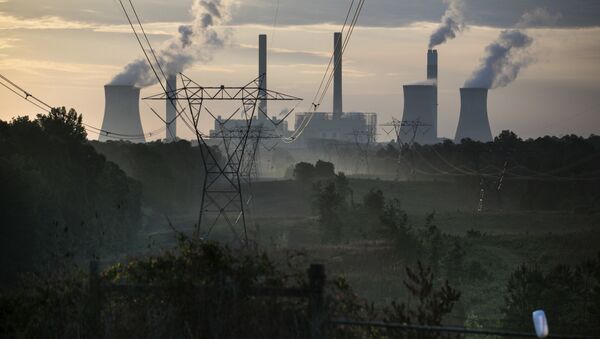Numbers
The Paris Agreement, signed and entered into force in 2016, is an agreement within the United Nations Framework Convention on Climate Change (UNFCC), a 1992 treaty that seeks to "stabilise greenhouse gas concentrations in the atmosphere at a level that would prevent dangerous anthropogenic interference with the climate system".
As of March 2019, 195 UNFCCC member states had signed the agreement. Of those 195, 187 states and the EU have either ratified or acceded to the agreement and are considered "parties" to the agreement. In September, Russia ratified the agreement. Other parties include China, India, and the US – the three nations with the largest greenhouse gas emissions.
According to October 2019 data from the Union of Concerned Scientists, China contributes up to 29 percent of all global CO2 emissions and the US contributes up to 16 percent. India’s share is 7 percent, and Russia’s is 5 percent.
Goal
The parties to the agreement are seeking to limit the global temperature increase in the 21st century to 2 degrees Celsius above pre-industrial levels. The parties also seek to further reduce the temperature rise to 1.5 degrees per century, according to the agreement’s wording. The agreement is binding, but the language says all parties vow to comply in a “non-adversarial and non-punitive” manner, which means countries that fail to keep their pledges cannot be penalised under the agreement.
To achieve this goal, all parties are required to announce their “nationally determined contributions” (NDCs) and report every five years on emissions and efforts taken to reduce them. Each consecutive NDC must represent a progression beyond the previous one and each nation’s report shall undergo an international technical expert review. The parties to the agreement vow to adhere to the principles of transparency and accountability.
In addition, a collective stocktaking will take place to assess global progress on emissions every five years.
Cooperation
The agreement allows countries to cooperate in their efforts to reduce emissions.
Developed countries are obliged to support the efforts of developing countries. Developed countries are obliged to report on financial support to developing countries and submit plans for future support every two years.
The agreement establishes a Climate Finance Mechanism, including a Green Climate Fund that serves the agreement. Developed countries vow to achieve a concrete figure of $100 billion every year to be provided to developing countries by 2020.
Progress
According to Encyclopedia Britannica, progress on achieving the accord's goals has been mixed. China, which contributes the most emissions, claimed it had made great strides and said it had achieved its 2020 goals in 2017.
The EU reported in 2018 that all of its member states had fallen behind. Sweden was the most successful with a 77-percent achievement of effectiveness.
The article notes that US progress on the agreement is unclear. While some reports indicate that the country’s climate policy, which has taken a sharp backward turn under the Trump administration, prevents the country from achieving its goals, individual states and cities have defiantly adopted stringent emissions regulations of their own, allowing the US as a whole to stay on track.
Despite international efforts, global greenhouse gas emissions remained the same between 2014-2016, but rose again, increasing by 1.6 percent in 2017 and by 2.7-3.4 percent in 2018, according to data provided by the Global Carbon Project and the Rhodium Group.
US Withdrawal
Under the agreement's terms, the US cannot withdraw before 4 November 2020, four years after the agreement was signed. The Trump administration made its required formal announcement to leave at the first possible occasion. Until the withdrawal takes effect, the US is obliged to maintain its commitments to the agreement, including reporting its emissions to the United Nations.
A memo obtained by the Huffington Post, which is believed to originate from the US State Department legal office, points out that first emissions reports are scheduled for “at least 2021 or 2022", and therefore the US “would not have any Paris Agreements to fulfill in the meantime".
Any "attempts to withdraw from the Paris Agreement outside of the above-described withdrawal provisions would be inconsistent with international law and would not be accepted internationally", the memo says.




